Bathing Machine
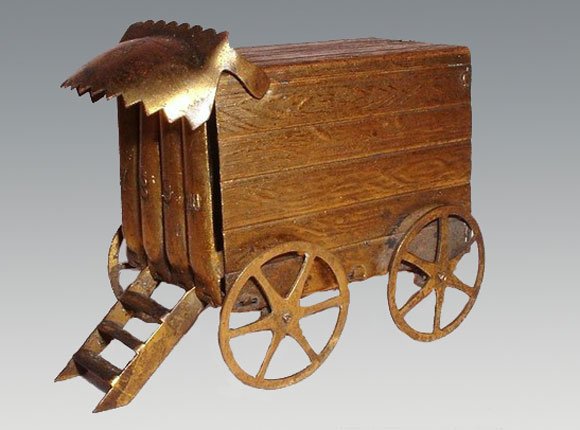
Needle Case (photographs from eBay, now part of Lynda Herrod's collection)
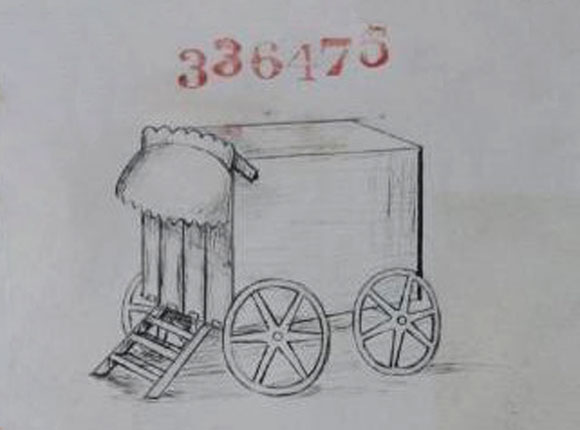
Design Representation
Design Details
Needle Case Type: |
Figural |
Patent/Registered to: |
J. Clarke & Son – Birmingham |
Patent/Design Representation #: |
Ornamental Class1: Metal: #336475 |
Patent/Design Registration Date: |
June 27, 1879 |
Location of Patent/Design Registration: |
The National Archives (TNA) - Kew, UK |
Reference #: |
TNA Representation - BT 43/45/336475
TNA Register - BT 44/4/336475 |
Dimensions: |
6.2 x 7 |
Material: |
Brass |
Name Variations: |
Unmarked |
Other Variations: |
None |
Additional Photographs
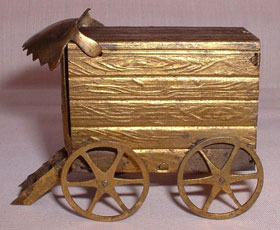
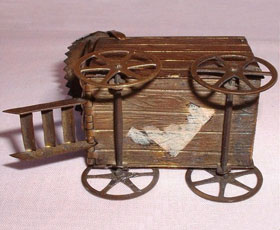
Side view and bottom view
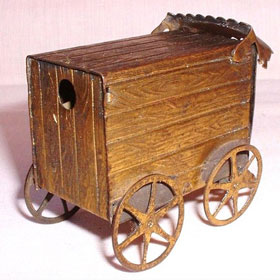
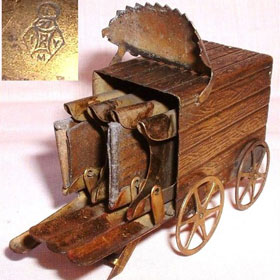
Back and front open views
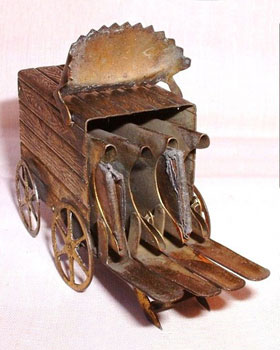
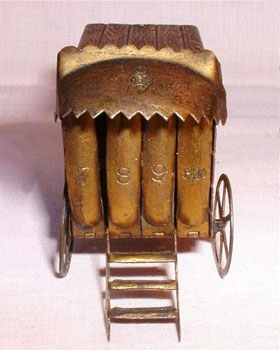
Front open and front closed
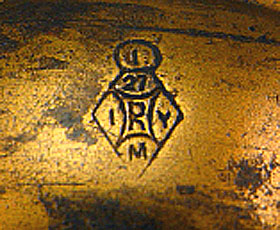
Diamond registration mark detail
Facts
The bathing machine was a dressing shed on wheels which was used at the English seaside from about 1736 to the early 20th century. It
was typically a box constructed of wood or a wooden frame with canvas sides and had one or two doors, front and back, reached by step
ladder. The bather entered and changed in readiness for their dip in the ocean while the bathing machine was drawn into the water by
horse or manpower. If a one door machine, it would be turned to have the door facing the water. The bather was then able to enter
the water through a door that was shielded from view by those on the beach. It contained a raised compartment to keep the bathers cloths
dry. Some had the added refinement of a canvas modesty hood or canopy which was lowered to the waterline to give complete privacy.
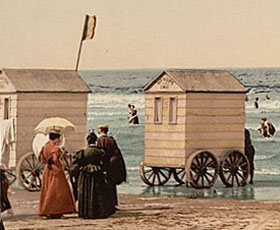
History
Sea bathing began in the early 18th century, often on medical advice, to gain the health benefits of seawater and sea air. Bathers
were naked and the beach segregated into men’s and women’s areas. Whereas men were permitted to bath nude up until 1860, women began
wearing flannel shifts often provided inside the bathing machine. In the Victorian era modesty dictated that women in particular utilize
the bathing machine even after the wearing of bathing costumes was adopted. Segregated bathing areas persisted until 1901. It was
only when people began bathing at the beach for pleasure and the beach resorts became too busy for people to queue for the use of the bathing
machines that they fell from use. In many cases they were parked on the beach without wheels and used as stationary changing rooms
assuming a new role as beach huts.
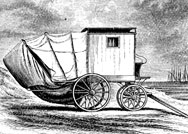
Miscellaneous
Queen Victoria and Prince Albert’s residence on the Isle of Wight, Osborne House, had a bathing machine added in 1846 so that Victoria
could enjoy the health benefits of sea bathing at the private beach which was part of the estate. It was a little more elaborate than
those at the seaside resorts. It had a change area with a separate toilet and a verandah and was moved to and from the sea by a winch and
cable. An entry from Queen Victoria's Journal 30 July 1847 states "Drove to the beach with my maids and went in the bathing machine,
where I undressed and bathed in the sea (for the 1st time in my life)… I thought it delightful till I put my head under water, when I thought
I should be stifled." A video on this restored bathing machine can be viewed by selecting this link
www.bbc.com/news/uk-18867194.
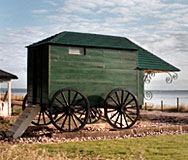
Note: Right side panel text and photos provided by Lynda Herrod.
















